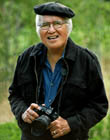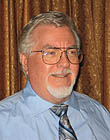|
|
This topic comprises 2 pages: 1 2
|
|
Author
|
Topic: Widescreen and Stereophonic Sound in 1953
|
|
|
|
|
|
|
|
|
|
|
|
|
|
|
|
|
|
|
Frank Angel
Film God

Posts: 5305
From: Brooklyn NY USA
Registered: Dec 1999
|
 posted 04-21-2013 10:50 AM
posted 04-21-2013 10:50 AM





When I first started, the booth I ran in Bryan/College Station had E-7s and those monster Superscope lenses which were variable -- had a knob on the top to allow you to change the amount of stretch from zero -- basically a pass thru of the image, but with first sucking out about 1/3rd of the light (they were light hogs) -- to X2 full scope. Actually, they might have had even more stretch that X2, but I can't vouch for that.
I do recall the manual said that for "effect" you should start the film at zero stretch -- Academy ratio on the screen -- and crank the anamorphic control knob as the curtains opened (remember curtains?) until the picture was full width on the screen. I never did that because I thought it was hokey and when I was a kid, I saw my first CinemaScope picture THE ROBE in NYC, and they didn't do that; NYC was the criteria that I used, even down to the use of the curtains and curtain lights once I got to run movies. My boss loved it. He bragged, "We do it just like the big New York City theatres do it."
Robert, as usual, a great piece; many thanks -- it is important that our history be documented; it won't be long before digital makes people forget how 100 years of film used to excite the imagination and its progression over the first century. I don't think there is nearly the excitement over the installation of digital as there was for CinemaScope or even 3D in the 50s.
I remember when the theatres in Queens NY where I lived installed CinemaScope. Many actually closed to do the physical installation, especially if they needed to modify the proscenium for the scope width. The one Century Theatre's flagship house, which was my favorite, closed for a few days. I don't think people realized what a huge event that was in the public's mind. Movie theatres were THE entertainment. As kids, we went every Saturday; the adults went much more often than we do today. There was always a title they wanted to see. In fact, there was a 1-sheet that the Century chain had in each of its theatres for quite awhile which stated, Movies, Movies, Movies -- everyone should have one to look forward to. I remember it so vividly that I actually recreated it and use it where I work now. To have a theatre close its doors, even for a few days, back then was BIG. The equivalent today would be if they were to shut down TV stations for a few days. The public was keenly aware that SOMETHING was happening at the local Bijou and the anticipation was of this event was palpable.
Me and the kids on my block ventured down to Century's Fresh Meadows Theatre, their flagship theatre in Queens, to see what we could see. We found the side door opened and I was too curious not to venture in. Workers were on the side of the stage constructing a wall of some sort while others were installing the scope screen -- (Fox called it the Miracle Mirror or something like that) a new lenticular silver screen which was part of Fox's CinemaScope spec to compensate for the light loss.
I couldn't pull myself away. My friends finally just left me there; I only left when one of the workers shooed me away. CinemaScope was even bigger than Cinerama in terms of public perception. Unlike Cinerama, it happened across the country in almost every theatre and at about the same time. Cinerama was only in key cities and major markets.
And I will add that even though the common perception is that CinemaScope was Hollywood's (Zanuck's in particular) sword with which to slay TV, it should be mentioned that it was also a direct response to the impact of Cinerama. It was not lost on the moguls that upstart Cinerama, which was not a product of any of the major studios, had captured the imagination of the public to the point were every show had lines around the block at all their installations, few as those might have been. Nothing makes studio execs' mouths salivate and turn green with envy as does the proverbial "line around the block," especially when it's not their title. They wanted in on that wide screen, stereophonic sound ticket sales bonanza. Zanuck especially sent his minions out to get him some of it. They came back with the anamorphic lens and the rest is history. He was so convinced in the future of wide screen (CinemaScope) that at one press conference he brashly proclaimed that every Fox title from then on out would be in filmed and presented in CinemaScope. The rest of the studios saw that writing on the wall and believed so strongly in it that they were even willing to pay Fox to used the CinemaScope logo on their anamorphic films. Imagine how it must have irked Jack Warner to have to use the CinemaScope logo and then right underneath it, albeit in VERY small font, add "A Trademark of Twentieth Century Fox?!
Once the screens went wide, that was the end of the Academy ratio, which for decades was thought to be the ideal aesthetic ratio.
| IP: Logged
|
|
|
|
|
|
|
|
|
|
|
|
|
|
All times are Central (GMT -6:00)
|
This topic comprises 2 pages: 1 2
|
Powered by Infopop Corporation
UBB.classicTM
6.3.1.2
The Film-Tech Forums are designed for various members related to the cinema industry to express their opinions, viewpoints and testimonials on various products, services and events based upon speculation, personal knowledge and factual information through use, therefore all views represented here allow no liability upon the publishers of this web site and the owners of said views assume no liability for any ill will resulting from these postings. The posts made here are for educational as well as entertainment purposes and as such anyone viewing this portion of the website must accept these views as statements of the author of that opinion
and agrees to release the authors from any and all liability.
|

 Home
Home
 Products
Products
 Store
Store
 Forum
Forum
 Warehouse
Warehouse
 Contact Us
Contact Us




 Printer-friendly view of this topic
Printer-friendly view of this topic













